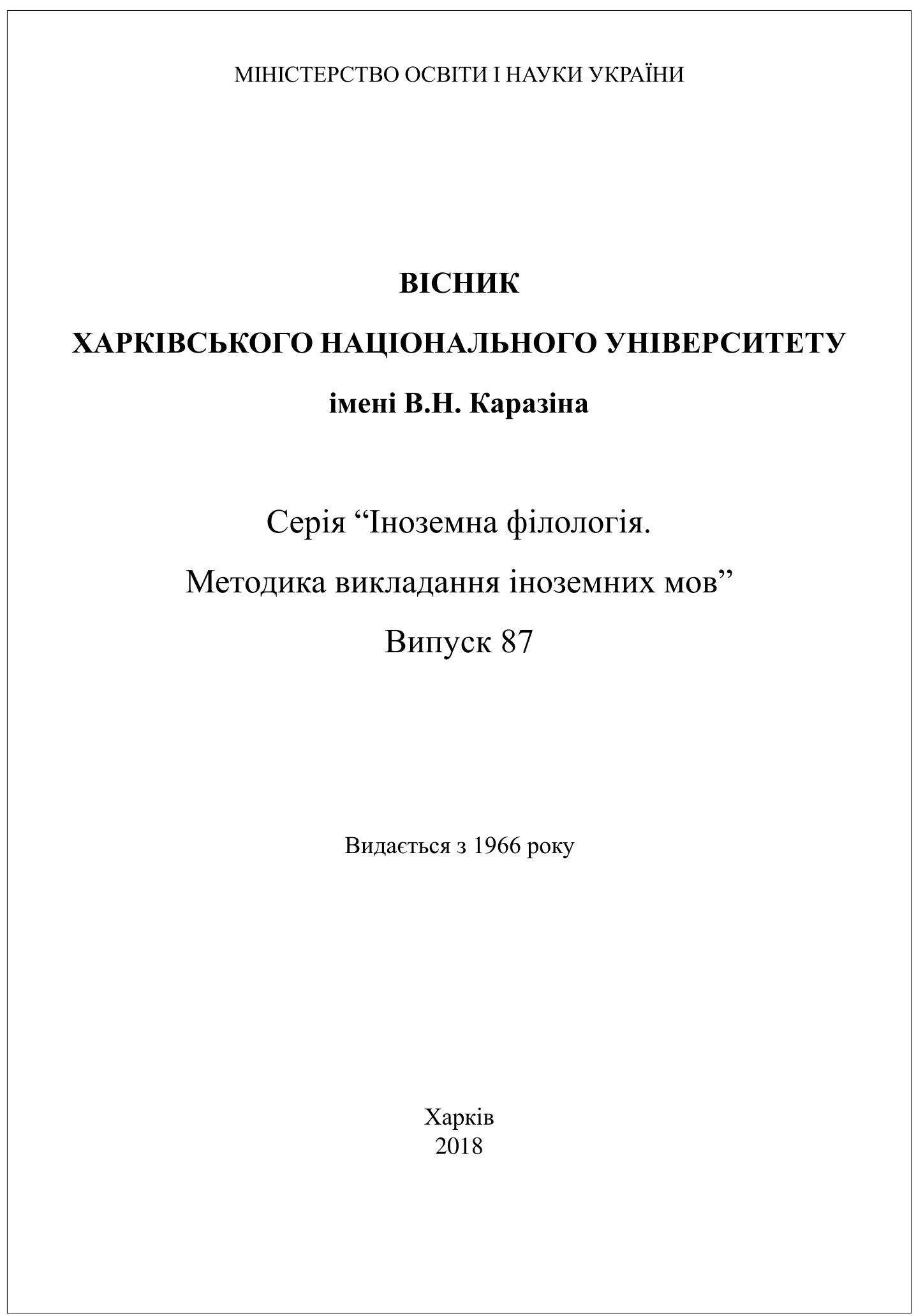Communicative strategies of negative assessment (based on English-language feature films)
Abstract
The article presents the results of analysis of the communicative intentions of the speakers realising negative assessment strategies in informal communication, modelled in the English feature film discourse. The research is done within the methodological framework of a cognitive-communicative approach to language where the communicative strategy of negative assessment is viewed as a cognitive-affective-volitional-conative mental structure of the speaker objectivised in verbal/co-verbal means of expression of negative assessment of a certain object, person, action or situation in an act of communication. Hyper-intention of negative assessment is realised through hyponymic communicative intentions of: 1) disapproval (the object is negatively assessed since it does not meet the subject’s expectations / the subject is motivated by the need to express himself/herself), 2) censure (the object-addressee is negatively assessed since it deviates from the ethic norms / the subject is motivated by the need to express the assessment before the addressee to urge him/her to reconcile with the expectations of the society), 3) criticism (the object-addressee is negatively assessed since it deviates from the utilitarian norms / the subject is motivated by the need to express the assessment before the object to urge him/her to reconcile with «the common sense»), and 4) depreciation (the object is negatively assessed since he/she does not fit the subject’s etalon/ the subject is motivated by the need to express he/she is not interested in the object). Negative assessment can be accompanied by such emotional attitudes of the subject toward the object as contempt, neglect, dissatisfaction, indignation, anger, irritation, hate, surprise, desperation, disappointment, etc. Intentions of negative assessment are distinguished from those of blame (the subject informs the addressee that the subject blames the object for taking/not taking some (un)ethical action), reproach (the subject informs the object/addressee that he/she failed the subjects’ expectations causing the subject emotional trauma) and insult (the subjects intends to hurt the object/addressee). Irony/sarcasm are addressed as implicit means of expressing negative assessment which, depending on the situation, can be realised as disapproval, censure, criticism or depreciation.
Downloads
References
Bondarenko, E.V., Martynjuk, A.P., Frolova, I.E., and Shevchenko, I.S. (2017). Kak narisovat' portret pticy: metodologija kognitivno-kommunikativnogo analiza jazyka [How to draw a portrait of a bird: Methodology of cognitive-communicative analysis of language]. Kharkiv: V.N. Karazin Kharkiv National University Publ.
Davidova, T.V. (2015). Movlennievi akty nehatyvnoi otsinky adresata v nimetskomovnomu dialohichnomu dyskursi [Speech acts of negative assessment of the addressee in German dialogical discourse]. Naukovyi Visnyk DDPU imeni I. Franka. – I. Franko DSPU Messenger, 4, 49–54 (in Ukrainian).
Derpak, O.V. (2005). Konfrontatyvni movlennievi zhanry: komunikatyvno-prahmatychnyi ta movnyi aspekty (na materiali ukrainskoi, anhliiskoi ta polskoi mov). Avtoref. dys. kand. filol. nauk [Confrontational speech genres: communicative-pragmatic and language aspects (based on the Ukrainian, English and Polish languages). Cand. philol. sci. diss. synopsis]. Kyiv. 20 p. (in Ukrainian).
Grafova, T.A. (1991). Smyslovaja struktura jemotivnyh predikatov [Structure of meaning of emotional predicates]. In: V.N. Telia (ed.). Chelovecheskij faktor v jazyke: Jazykovye mehanizmy jekspressivnosti [Human factor in language: Language mechanisms of expression]. Moscow: Nauka Publ, pp. 67–99.
Khoroshilova, V.M. (2017). Stratehiia zavdannia obrazy u nimetskomovnomu dialohichnomu internet-dyskursi. Avtoref. dys. kand. filol. nauk [Strategy of inflicting offense in German dialogical discourse. Cand. philol. sci. diss. synopsis]. Kharkiv. 20 p. (in Ukrainian).
Martynyuk, A. (2017). "Now that the magic is gone" or toward cognitive analysis of verbal / co-verbal communication. Kohnitsiia, Komunikatsiia, Dyskurs. – Cognition, Communication, Discourse, 15. Available at: https://sites.google.com/site/cognitiondiscourse/vypusk-no15-2017/martynyuk-a-p
Martynyuk, A.P. (2016). Kohnitivno-kommunikativnaia linhvistyka: v poiskakh bazovykh printsypov i metodik analiza [Cognitive-communicative linguistics: in search of basic principles and methods of analysis]. Kohnitsiia, Komunikatsiia, Dyskurs. – Cognition, Communication, Discourse, 12. Available at https://sites.google.com/site/cognitiondiscourse/vypusk-no12-2016/martynuk-a-p
Sidak, O.O. (2013). Rol komichnoho efektu v realizatsii konfrontatsiinoi stratehii anhlomovnoi politychnoi obhrazy. Avtoref. dys. kand. filol. nauk [The role of comic effect in realization of the confrontational strategy of political insult. Cand. philol. sci. diss. synopsis]. Kharkiv. 20 p. (in Ukrainian).
Soloshchuk, L.V. (2006). Verbalni i neverbalni komponenty komunikatsii v anhlomovnomu dyskursi [Verbal and non-verbal components of communication in English discourse]. Kharkiv: Konstanta Publ.




